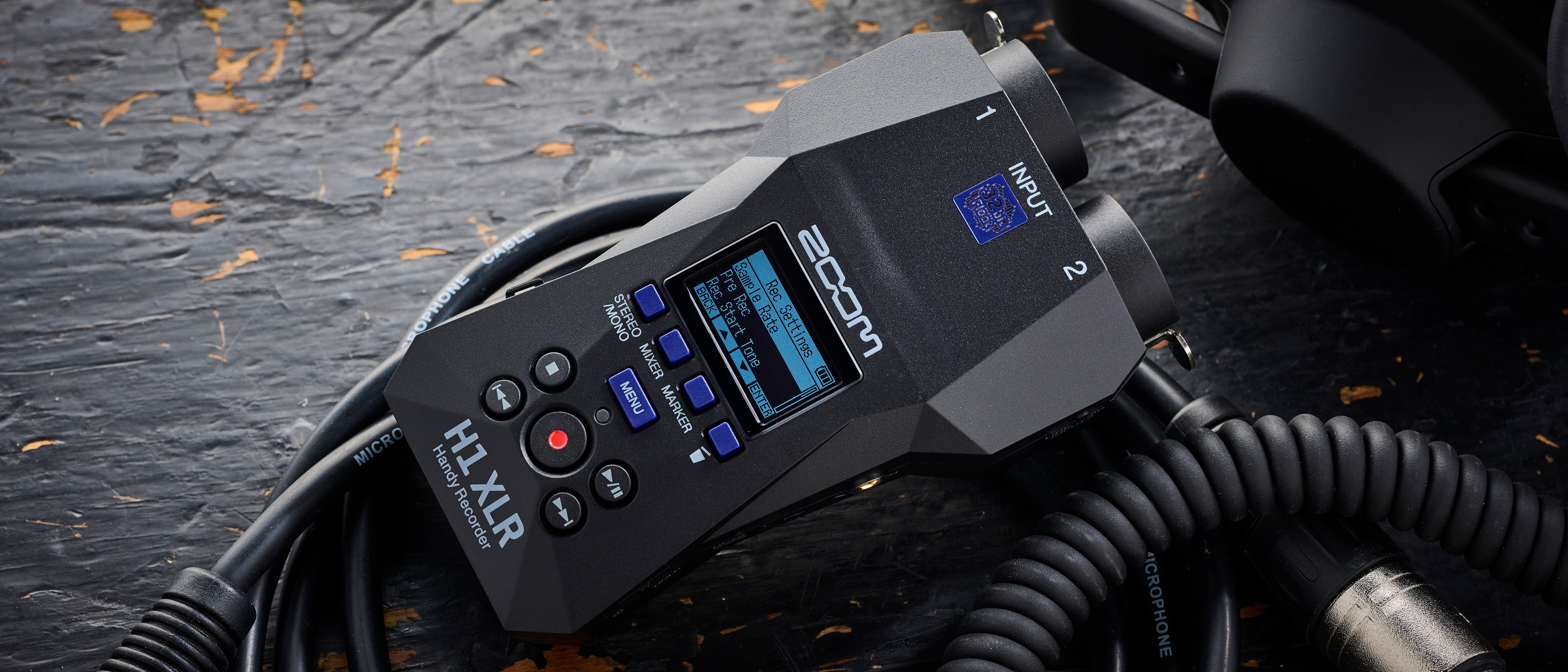MusicRadar Verdict
The H1 XLR is an impressive compact stereo recorder that’s light enough to mount with a camera and small enough to stick in your pocket. The USB interfacing is a handy bonus and the no-nonsense 32-bit float audio implementation a highly desirable feature.
Pros
- +
Very compact.
- +
Locking XLR inputs.
- +
32-bit float recording.
- +
Integrated USB interfacing.
- +
Multiple powering options.
- +
Excellent value.
Cons
- -
Navigating the menu is fiddly without the jogwheel found on larger models
MusicRadar's got your back
What is it?
Zoom’s H1 XLR stereo recorder is the latest addition to its H Series Handy Recorders series and swaps out the onboard mics found on the other models for a pair of phantom-powered mic/line inputs. That’s a pretty simple reworking, and with those mics removed the unit is impressively compact.
Much like the other H series field recorder units, the H1 XLR utilises 32-bit float technology for trouble-free recording to Micro SD, and also includes USB 2.0 interfacing via the USB-C connector on the side. The onboard recorder offers 44.1, 48 and 96kHz 32-bit float recording, meanwhile, USB interfacing is at 44.1 and 48kHz at either 16-bit or 32-bit float.
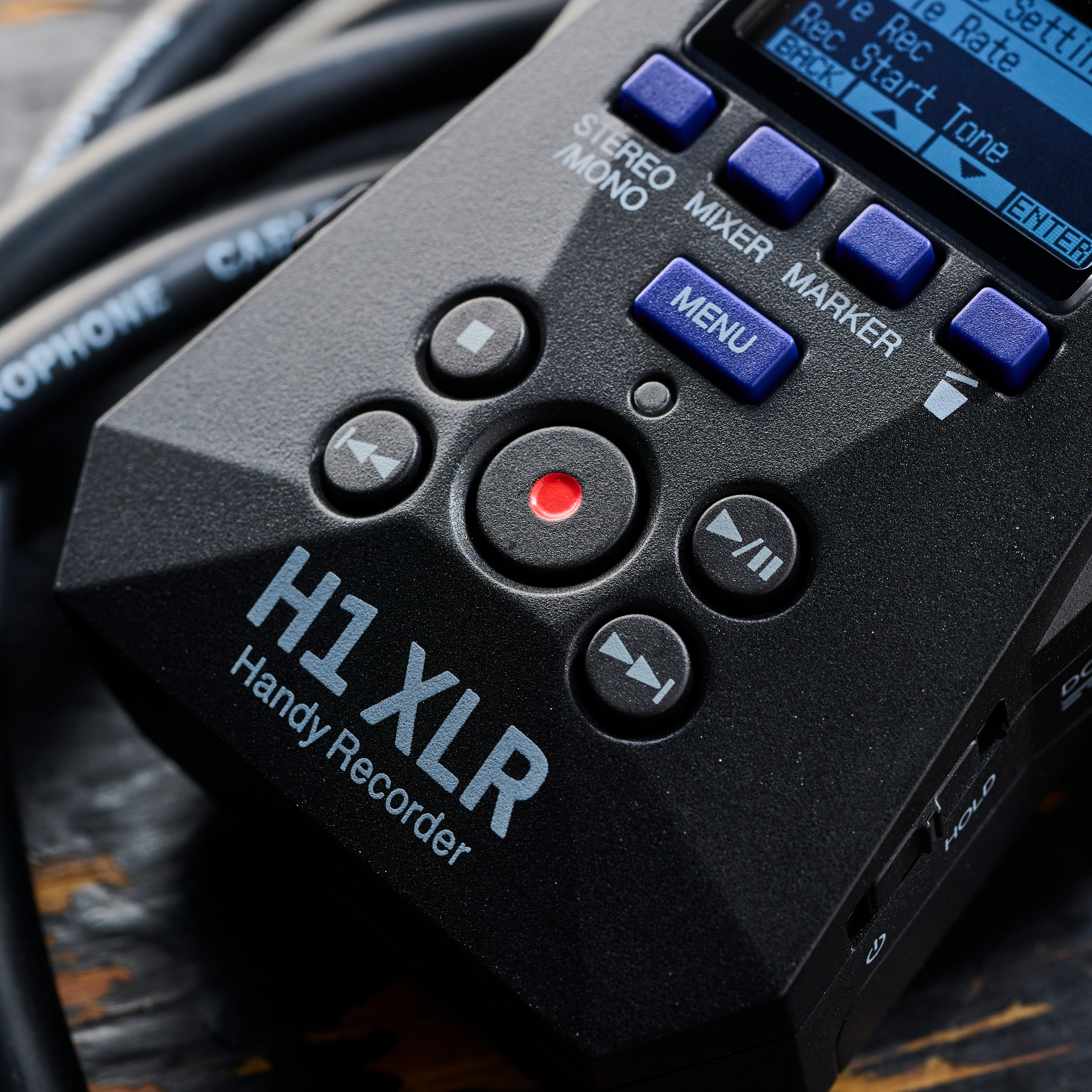
The H1 XLR layout is very straightforward, with the transport controls and high-contrast OLED display on the front panel flanked by connections and additional controls on the sides. The main inputs are via combi XLR/TRS locking connectors, and each input also includes a physical mic/line selector switch.
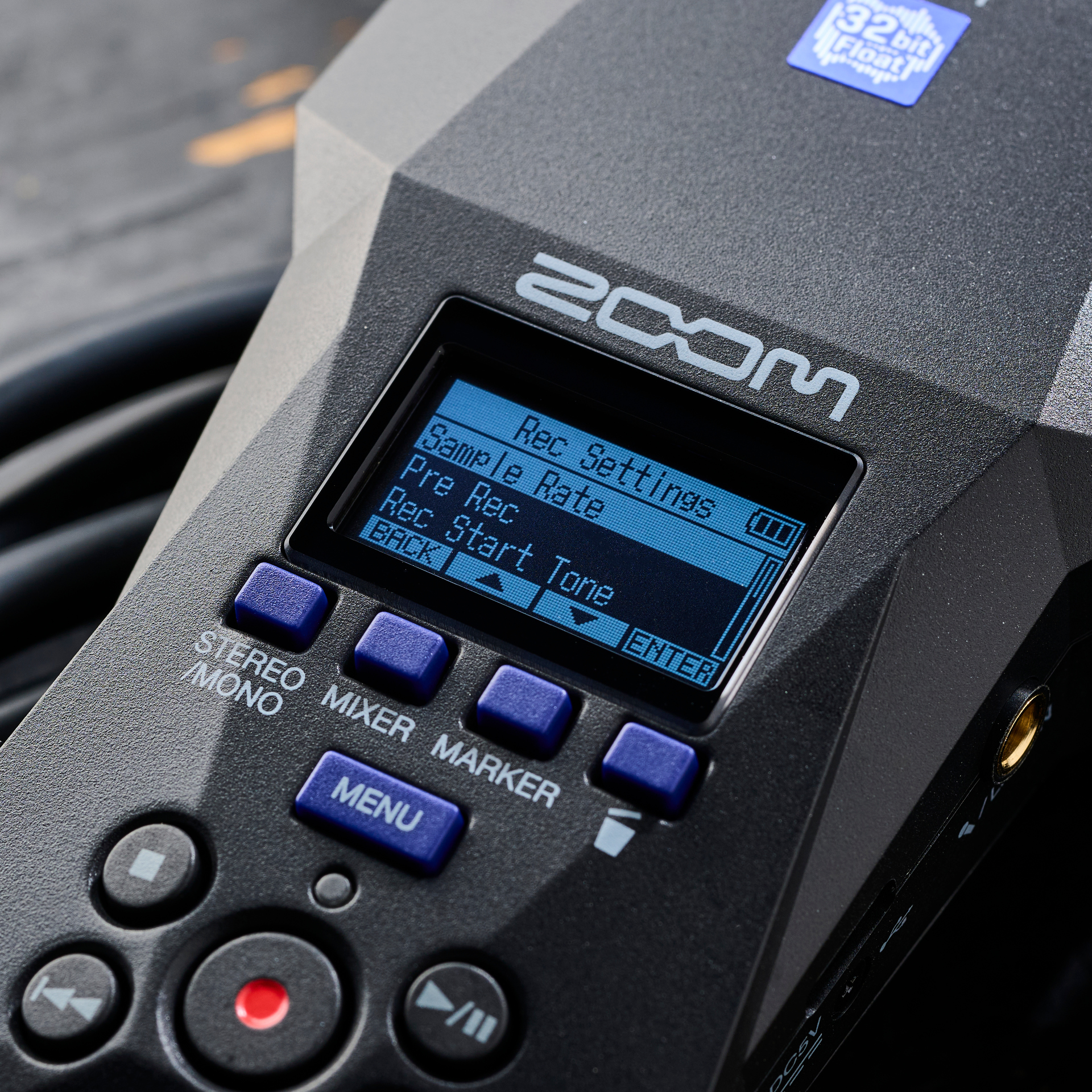
A further stereo mini jack mic/line input can be found on the right-hand side next to the USB-C socket and locking power switch. Meanwhile, on the left-hand side, you have a mini jack headphone/line output, the output volume and the covered Micro SD slot.
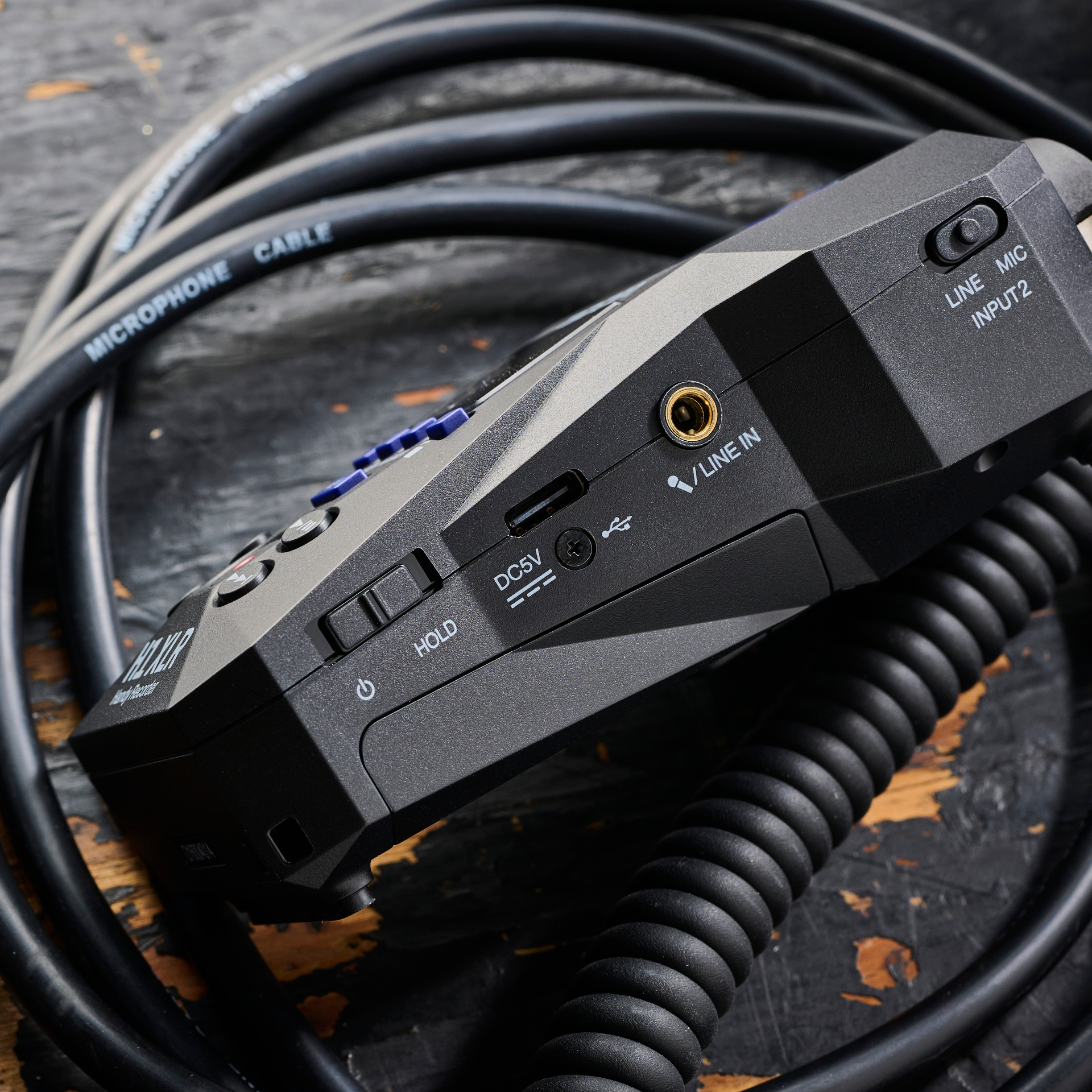
Finally, on the underside you’ll find the battery compartment, camera stand thread and mini speaker. The mini speaker can be used to playback recordings and also supports the onboard menu spoken guide, which is an accessibility feature. The default powering option is 2x AA batteries, but the H1 XLR can also be USB bus-powered or via an external USB-C PSU (not included).
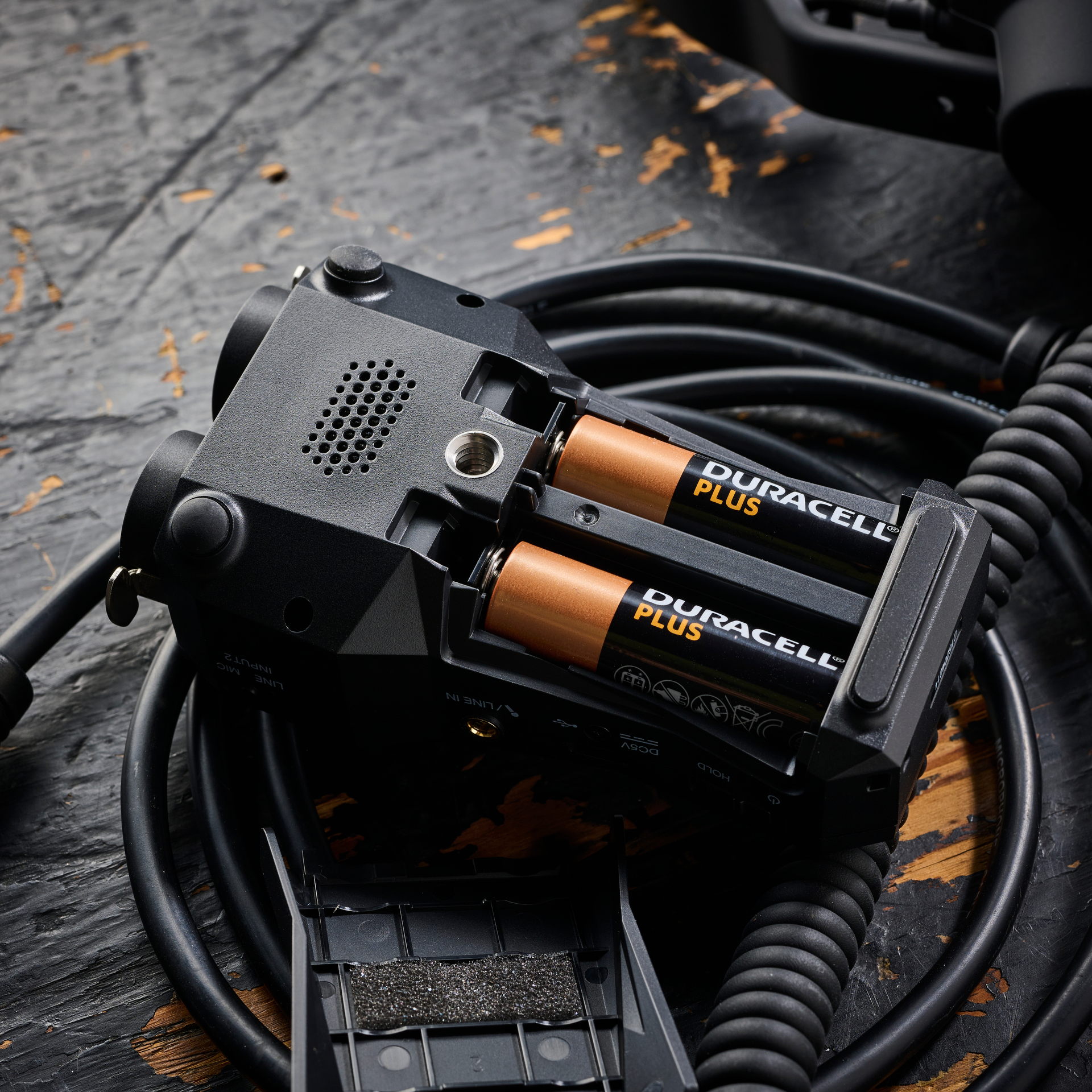
Performance
In keeping with its compact size, the H1 XLR has a tiny high-contrast OLED display with four function buttons (Stereo/Mono, Mixer, Marker, Bin) just below. The display handles the recorder waveform and recordings list navigation as well as the onboard settings menu, which is opened using the dedicated Menu button just below. By default, the display shows the real-time incoming signal waveform, and this has a split screen format when using stereo or dual mono modes.
In menu mode, the four function buttons are used to navigate the menu features. This is where you activate input settings such as 48V phantom (thankfully on an individual input basis) and low-cut filter (off, 80Hz, 160Hz). It’s also where you format the Micro SD card and choose the USB mode, including the file transfer option to access the H1 XLR’s Micro SD from your computer desktop. The menu is peppered with further handy options including record slate tone, record preroll time, metadata writing and fixed output volume.
Want all the hottest music and gear news, reviews, deals, features and more, direct to your inbox? Sign up here.
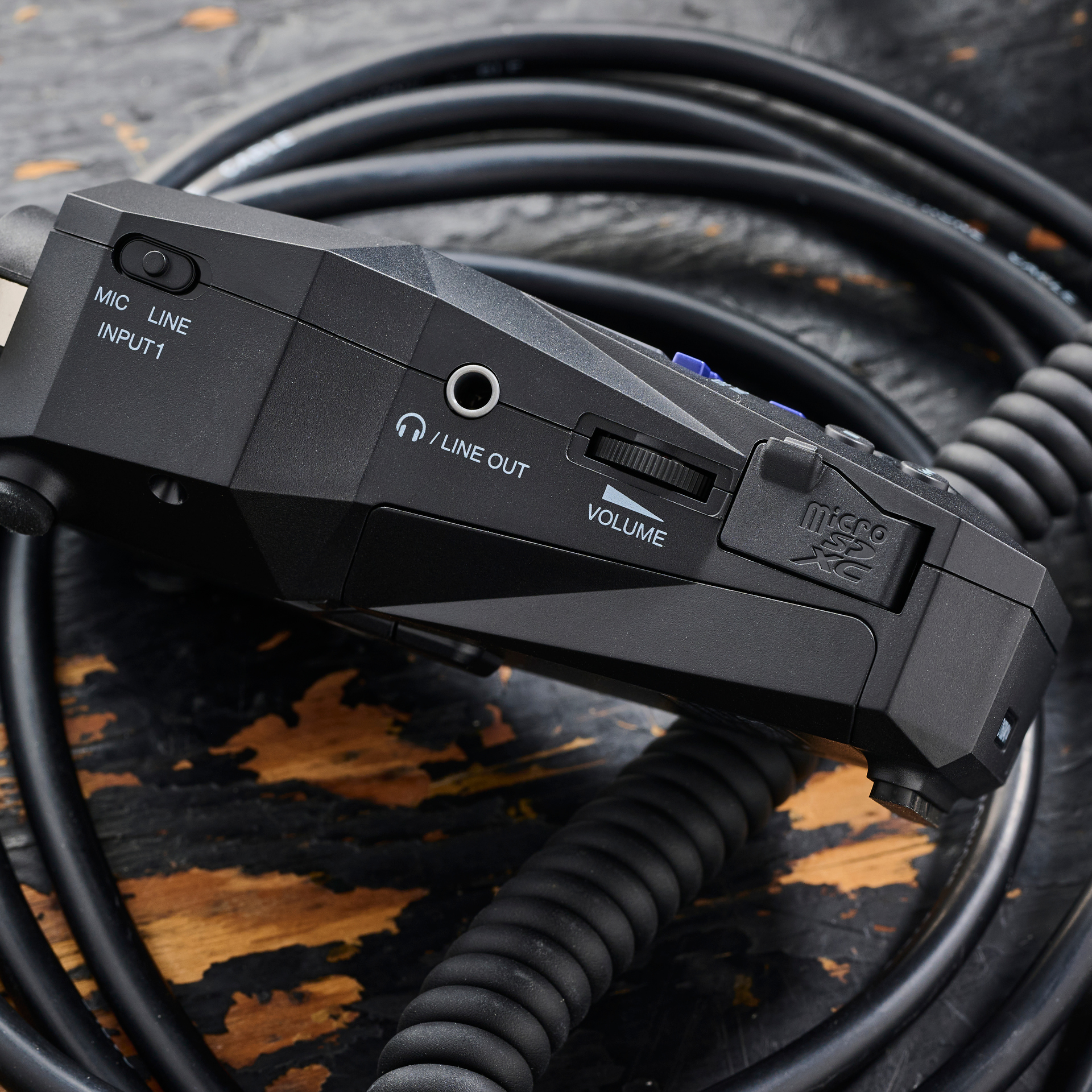
As mentioned the H1 XLR operates at 32-bit float, and is designed to deliver Zoom’s ‘Just Press Record’ mantra. With a vast dynamic range to play with Zoom has implemented a gain configuration that requires no user setup. It delivers clip-free recordings with no unpleasant gain limiting and is ready for gain trimming in post. The obvious trade-off is larger file sizes, plus you’ll still need to make sure your source doesn’t overload your mic capsule or the input. But these points aside, we really like the convenience whatever the recording environment.
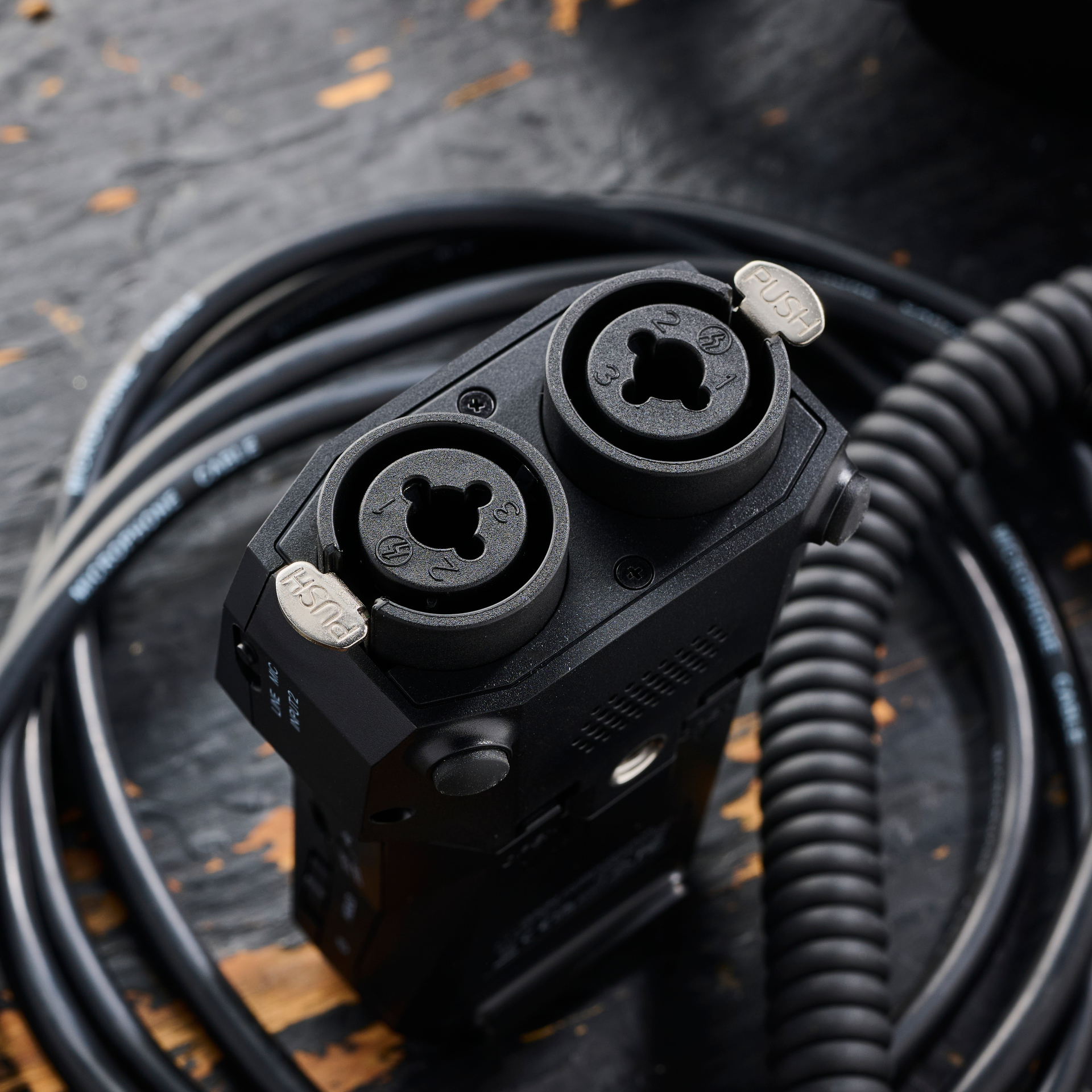
Verdict
Overall, the H1 XLR will clearly appeal to a broad range of users and is far more universal than a mic-equipped recorder. It’s also well-designed, ludicrously compact and comes in at a very reasonable price point. Top marks.
The H1 XLR is an impressive compact stereo recorder that’s light enough to mount with a camera and small enough to stick in your pocket. The USB interfacing is a handy bonus and the no-nonsense 32-bit float audio implementation is a highly desirable feature.
Hands-on demos
ZOOMcorporation
Specifications
- Inputs: 2x XLR/TRS combo mic/line/instrument, line in stereo 3.5mm jack.
- Outputs: Headphone/line out 3.5mm mini jack.
- Phantom power: 48V individually selectable.
- Noise: -122dB EIN.
- USB power: USB bus or AC Adapter (Zoom AD-17F not included).
- Battery power (max time): 2xAA Alkaline (12 hours), NiMH 1900 mAh (11 hours), Lithium (19 hours).
- Display: 128 x 64 OLED.
- Built-in speaker: 20 mm × 30 mm elliptical dynamic speaker.
- Onboard recording: 44.1, 48 and 96kHz at 32-bit float.
- USB interfacing: 2-in/2-out at 44.1 & 48kHz at 16-bit or 32-bit float.
- Micro SD: SDHC 4GB to 32GB, SDXC 64GB to 1TB.
- Underside mounting: standard DSLR thread.
- Dimensions: 62.1(w) x 107 (d) x 39.3 (h) mm.
- Weight (including batteries): 164g.
- CONTACT: Zoom
Jon is a London based platinum award winning mixer, producer, composer and club remixer with a diverse CV that spans dance, pop, rock and music for media. He’s also a long term contributor to MusicRadar's music technology tutorials and reviews. Whether working alone or collaborating he usually handles final mixdowns, so you’ll also find MusicRadar peppered with his handy mixing tips.
